How to store apples – to keep them perfectly fresh for longer
Find out how to store apples properly so that you can enjoy the crisp and delicious fruits for weeks or months after harvesting
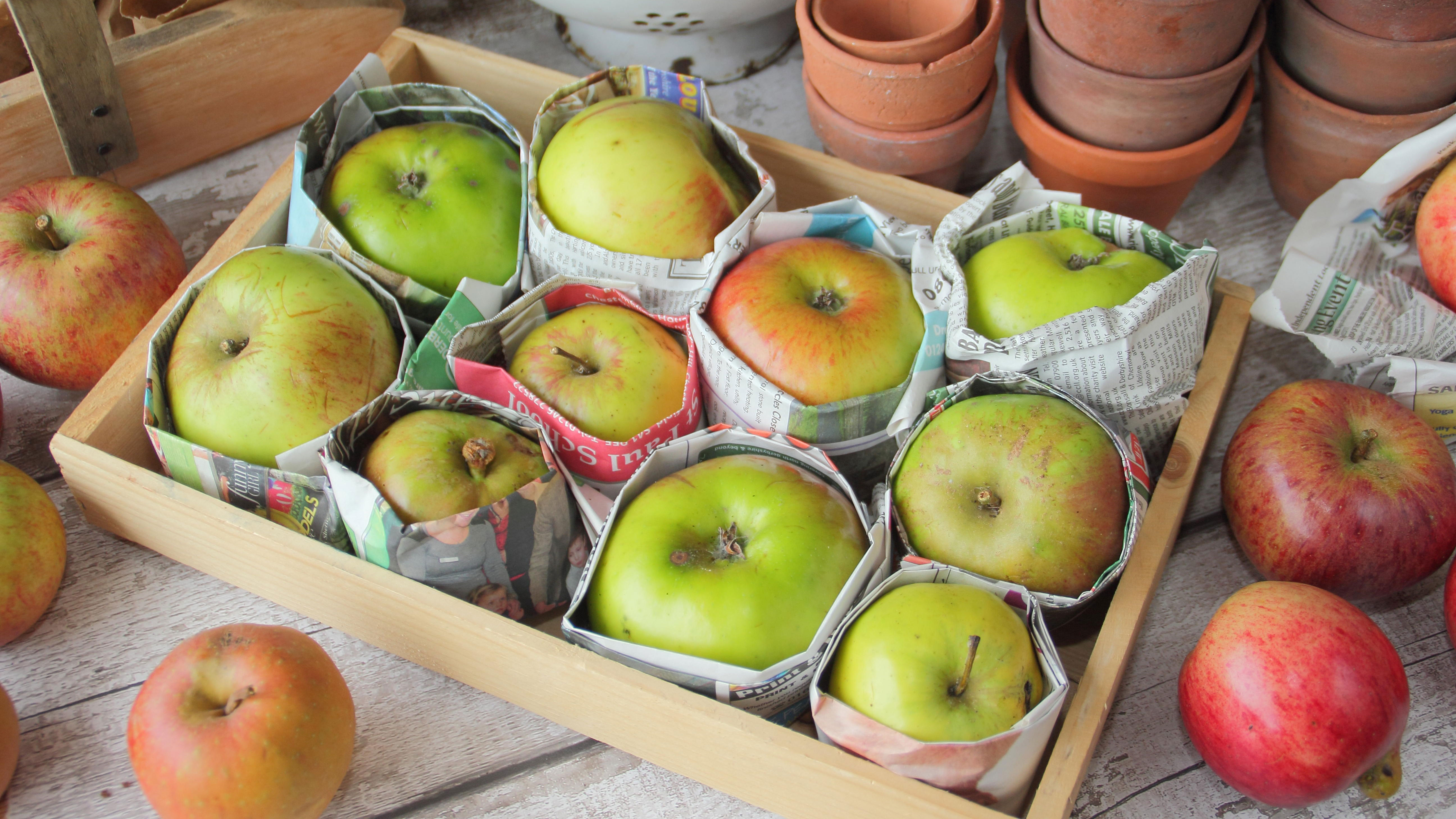

You need to know how to store apples correctly so that you can enjoy your own homegrown harvest, or bounty from a visit to a pick-your-own farm, for longer.
Whether you want to preserve the apples for crunchy snacks, for stewed fruit, to make into jams and jellies, or for baking in delicious, sweet pies, storing them in the right way is crucial.
While all apples can be stored for a certain length of time, some can be kept for longer than others, so the storage advice will differ depending on which variety of fruit trees you have grown, or apple varieties you have picked.
How to store apples – different varieties
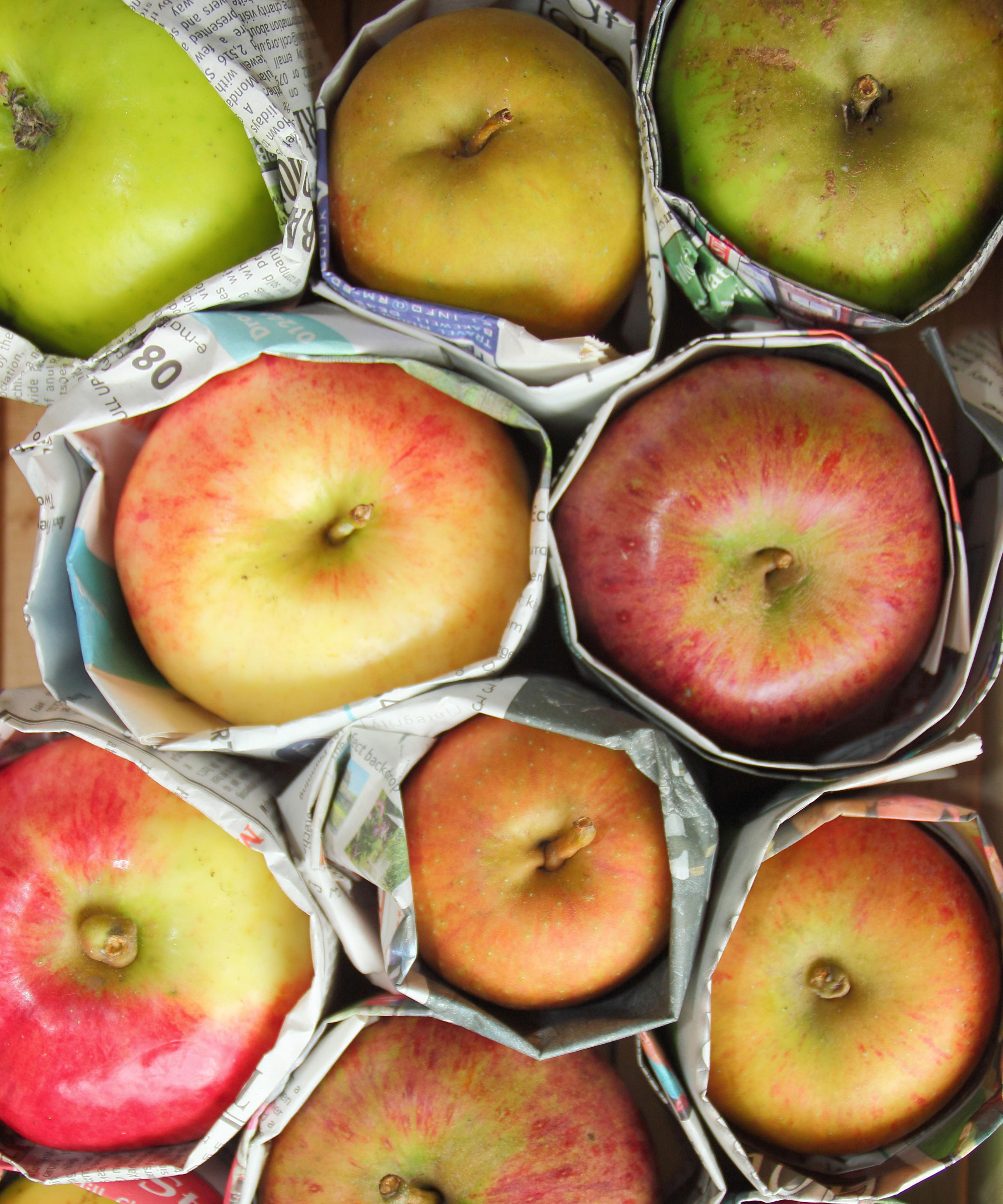
It will have been a waste of your time taking great care in planting apple trees, if you then ruin the harvest by not storing the fruits the best way.
The first step in how to store apples is to check the variety you have picked. 'Although all apples can be stored, some will store better than others,' advise the experts at Apple for That.
The length of time for which you can store apples will depend on the variety. Remember, too, that ‘the storing quality of apples will also depend on the vagaries of the season, such as whether there has been a lot of sun,’ adds Tom Adams of Tom The Apple Man fruit tree nursery, so apples may store for shorter or longer periods from year to year.
Storage time of early apple varieties
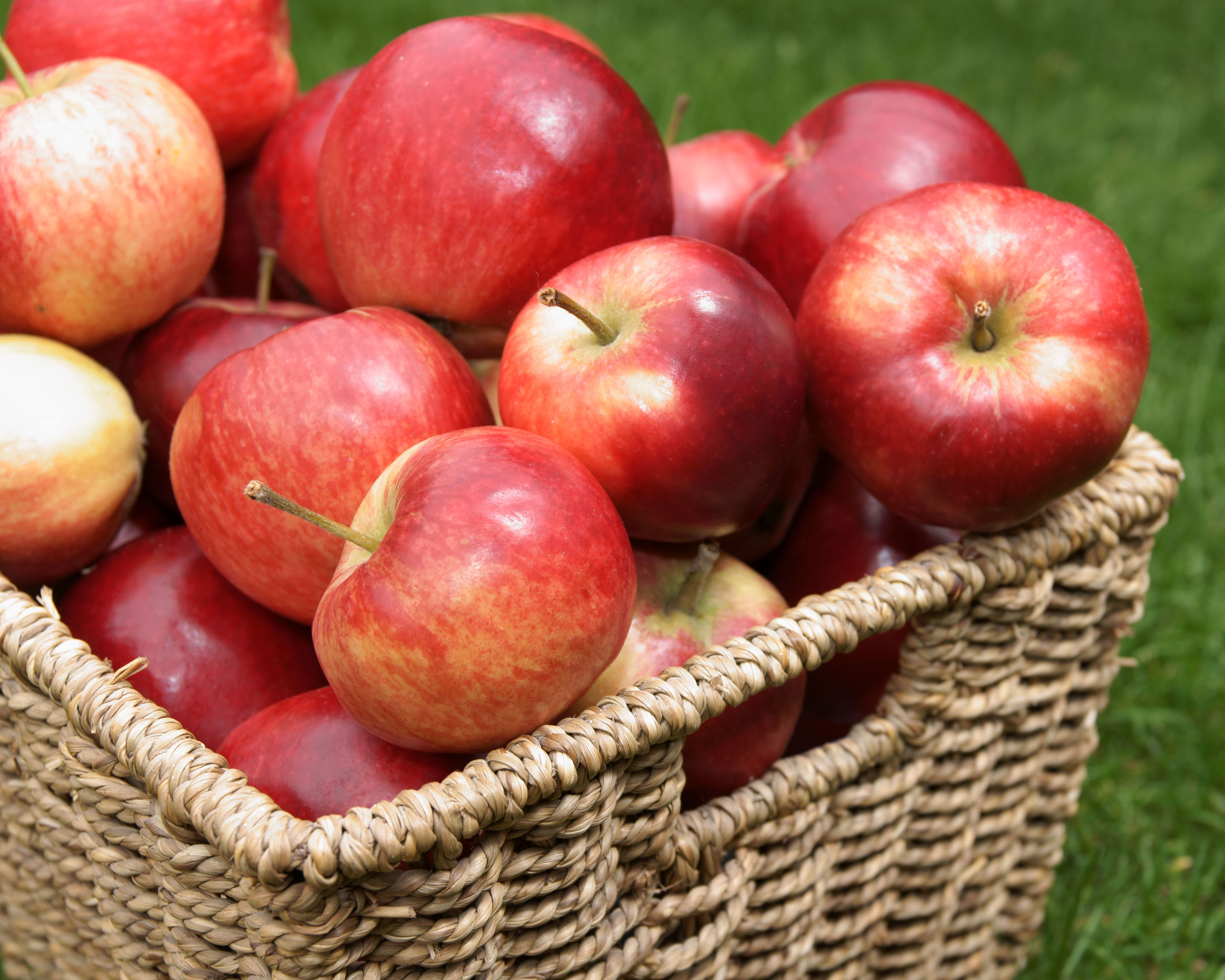
Early varieties – apples that ripen between June and August, depending on the area and climate where you live – are favored for their early season crop, but mostly 'only have a storage capacity of a few days,' advise the experts at Brogdale Collections.
Early varieties include Discovery, Katy, Bevan's Favorite, Akane, Beauty of Bath and many more. If you have learned how to plant crab apple trees, some varieties, such as Centennial and Golden Hornet, are best used straight from the tree for making applesauce or jelly, as they have poor storage abilities.
'Discovery doesn't keep well, but picked straight off the tree has an amazing floral flavor and is a good start to the season,' says Tom Adams.
Storage time of mid season apple varieties

Mid season varieties – which are ready to harvest between early September and mid October – such as Golden Delicious, Empire or Egremont Russet – will probably store for about two months, 'usually not much beyond late November,' advises Richard of fruit tree specialists Keepers Nursery.
There are, however, some hardy early and mid varieties that do store well, 'and hold up well over time, such as Gala, Fuji, and Golden Delicious,' advise the experts at Apple For That. So do check the storage requirements of those you grow or pick.
Storage time of later season or winter apple varieties
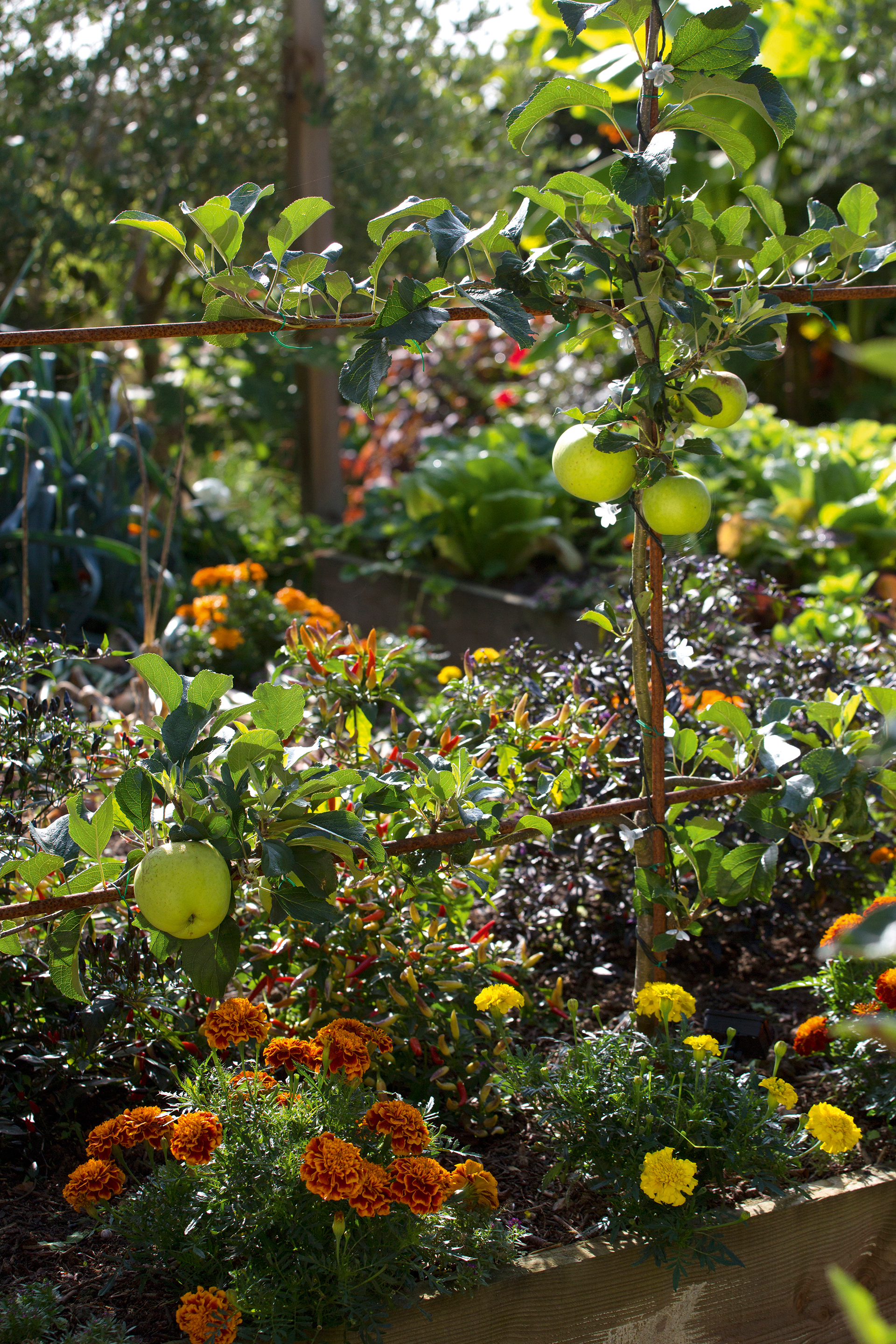
Later season or winter apple varieties – those that ripen from early fall sometimes into early winter – are the keepers, with longer storage capacity. 'Generally, the apples that are harvested later in the season are denser and hold up well for a long period of time,' say the experts at Tuttle Orchards in Indianapolis.
Late season apples include the likes of Gold Rush, Braeburn, Cox's Orange Pippin, Winter Gem, Granny Smith, Red Winston, and if stored in the right conditions can keep until March or April.
'Cooking apples, such as Bramley, Newton Wonder, Annie Elizabeth, will store well into April if you are lucky,' add the experts at Brogdale.
When to harvest apples for storage

Before deciding how to store apples, you need to ensure you are picking the healthy and ripe ones at the correct time.
'Apples need to be picked when they are ripe or nearly ripe. Underripe apples won't store very well,' advises Tom Adams.
To assess when to pick apples, 'watch for the first true windfalls – not premature drop due to codling moth. Lift the fruit in the palm of the hand, and if it leaves the spur easily with its stalk intact, it is ready for picking,' explains Amanda Richardson of Ken Muir fruit tree suppliers.
'Early apples should be picked before they are fully ripe, and before they become soft and mealy. Pick the ripest, best colored fruits first, usually those near the top of the tree on the south, sunny side.'
Test apples a week or so before you intend to harvest them. 'Pick the odd one off and taste it to see if it is sweet enough, or cut it open and check the seeds. Underripe seeds will be white, whereas ripe will be darker,' says Tom.

'Late varieties should be allowed to hang on the tree as long as possible and their pips should be fully brown when picked but most should be harvested by the end of October, except the very late varieties,' Amanda adds.
When harvesting, only keep good quality apples with no bruises or insect holes as these will rot and break down in storage.
'Only store apples that have been plucked off a tree rather than fallen on the floor as these will have some bruising and blemishes. Even if the stalk has snapped off an apple can start to rot in storage,’ advises Tom Adams.
Those apples that are not up to storing can be lightly stewed or chopped and frozen for use in pudding and pies, as an addition to breakfast porridge and cereal, or used to make apple sauce, jellies, jam or juice.
Where to store apples
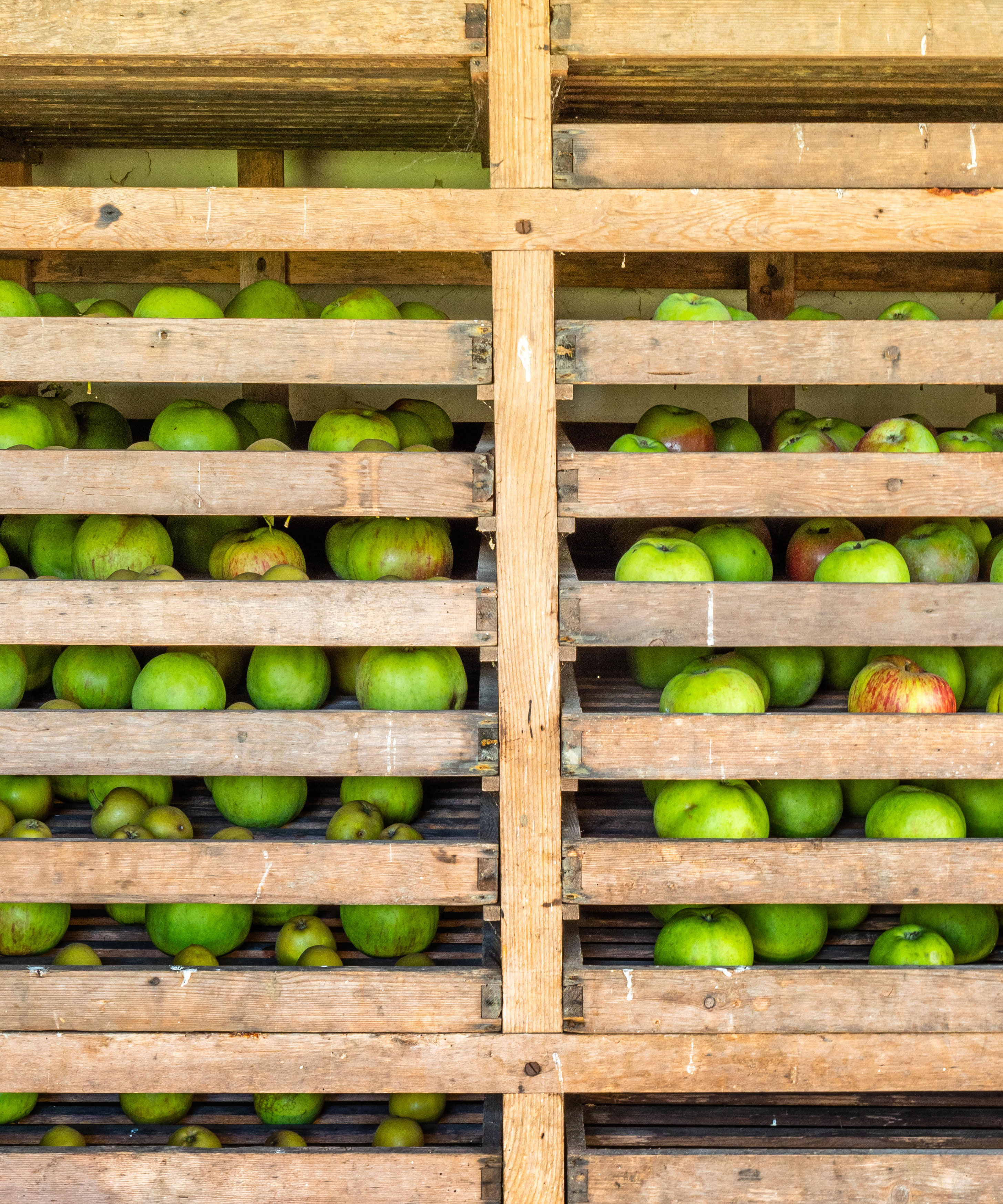
An important point to remember when learning how to store apples is that 'the sooner apples are stored after picking, the better,' says Tom Adams.
‘Apples should be stored in a cool, dark, humid but frost-free place, such as a garage, cellar or shed,’ explains Amanda Richardson of Ken Muir fruit tree suppliers.
Make sure the location is mouse and rat proof. ‘If you want to keep apples in an outbuilding, it needs to be cool and in the shade so that it does not heat up in sunny weather,’ adds Tom Adams.
'Good ventilation and air circulation is important as picked apples give off a gas called ethylene as they continue to ripen, and you are looking to slow that down,’ explains Tom Allen.
‘Store in trays, ensuring the apples don’t touch each other, or apart on slatted shelves where the air can circulate. The apples should be kept dry. Check them from time to time and discard any that are damaged or soft,’ say the Brogdale experts.
Opinion is divided on whether you need to individually wrap the apples. The experts at Brogdale, Ken Muir and an Apple For That advise that apples can keep longer if wrapped individually in tissue paper or newspaper, whereas Tom Adams does not think they need to be wrapped.
The key in how to store apples correctly is to keep them in a cool, dark, humid environment with good ventilation.
What is the best way to store fresh apples?
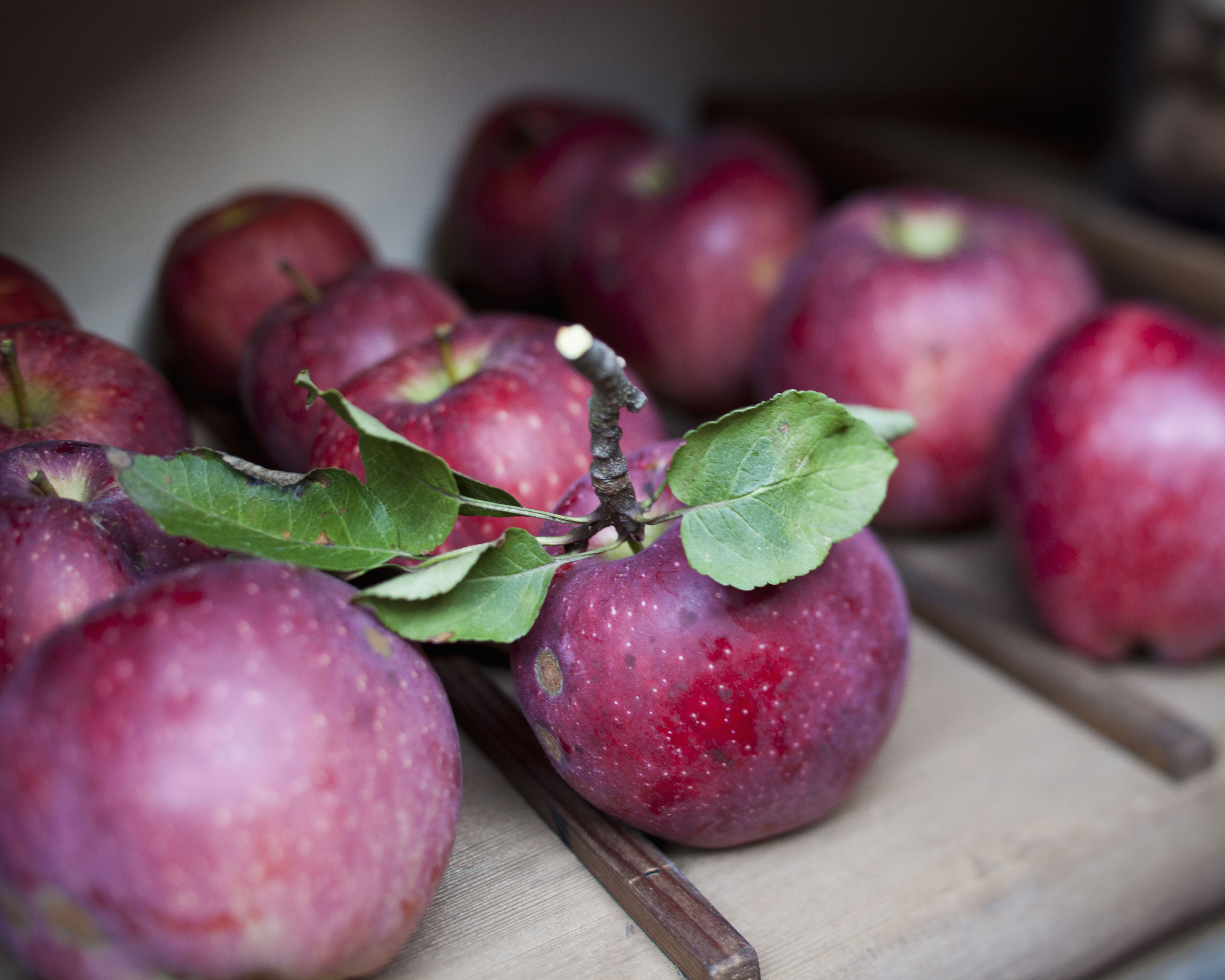
The best way to store fresh apples, particularly if you have only a small quantity, is in a cold store or refrigerator.
'Apples keep longest when held at 31-36°F (0-2°C), so, ideally store them in the coolest part of the refrigerator,' advise the experts at Tuttle Orchards in Indianapolis.
The cool temperatures in a refrigerator slows the release of the ethylene that causes ripening, so the apples will last for longer.
'Keep the apples in a separate container to other fruit or vegetables as the ethylene will speed up the decay of other produce,' advise the Tuttle Orchards experts.
Try to keep the refrigerator with some humidity to reduce shrivelling,' add the experts at Apple For That.
'Apples do best in an environment with 90 per cent humidity, but a refrigerator is a natural dehydrator, so put a wet sponge or wet paper towel in the crisper, or spray the apples with water every few days to extend their life,' say the experts at Tuttle Orchards.
How long do apples last unrefrigerated?
If apples are unrefrigerated and are, for instance, kept on a kitchen counter or on a table in a bowl, then they will generally last for about 7 to 10 days.
It is best not to store apples and bananas together as they both produce a lot of ethylene as they continue to ripen, so storing them together will speed up their ripening process and cause them to go soft and rot quicker.
'If storing at home, just remember that fruit of all types hate central heating,' add the experts at Brogdale Collection. Try to store the apples in a cool pantry and well away from any radiators or other heat source.
Sign up to the Homes & Gardens newsletter
Design expertise in your inbox – from inspiring decorating ideas and beautiful celebrity homes to practical gardening advice and shopping round-ups.
Rachel is senior content editor, and writes gardening content for homesandgardens.com, Homes & Gardens magazine, and its sister titles Period Living Magazine and Country Homes & Interiors. She has written for lifestyle magazines for many years, with a particular focus on gardening, historic houses and arts and crafts, but started out her journalism career in BBC radio, where she enjoyed reporting on and writing programme scripts for all manner of stories. Rachel then moved into regional lifestyle magazines, where the topics she wrote about, and people she interviewed, were as varied and eclectic as they were on radio. Always harboring a passion for homes and gardens, she jumped at the opportunity to work on The English Home and The English Garden magazines for a number of years, before joining the Period Living team.
-
 How to grow crepe myrtle in pots – and transform even the smallest of yards with dazzling flowers this summer
How to grow crepe myrtle in pots – and transform even the smallest of yards with dazzling flowers this summerGrowing crepe myrtles in pots will inject splashes of brilliant color into your outside space
By Thomas Rutter Published
-
 I've spent over 200 hours testing vacuums and swear by my two Dysons – this is how I properly clean a Dyson vacuum filter for longer-lasting appliances
I've spent over 200 hours testing vacuums and swear by my two Dysons – this is how I properly clean a Dyson vacuum filter for longer-lasting appliancesYour Dyson vacuum will last much longer and clean at its best
By Dan Fauzi Published